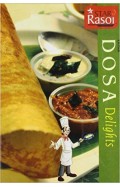- Home
- Books
- Sale
- Shelf-Indulgence Friday
- 10% OFF
- Sacred Modernity - The Holy Embrace of Modernist Architecture
Sacred Modernity - The Holy Embrace of Modernist Architecture
By: Jamie McGregor Smith
-
Rs 19,435.50
- Rs 21,595.00
- 10%
You save Rs 2,159.50.
Due to constant currency fluctuation, prices are subject to change with or without notice.
A Photographic Pilgrimage to the Temples of Modernism
Sacred Modernity documents the dramatic shift in ecclesiastical architecture across post-war Europe. Spurred on by the modernizing impulses of the Second Vatican Council in the early 1960s, and in search for an appropriate architectural language that showed that the Catholic Church was still relevant to the modern world, this was the period when the church married the atheist architect, and bore a child of pure form. Among these structures, some exude a joyful antagonism, while others emanate a cold minimalism. Boldly designed, outrageous and provocative for their time, the aesthetic of this period still ignites great debate between modernists and traditionalists.
Half a century on, this study traces how their materials and ideals have matured and patinated. Remaining amongst the most unique buildings within our public sphere, they are future visions from the near past that seem to anticipate societies current shift away from organized religion towards an individual spirituality. The book represents the first attempt by a photographer to collate the religious architecture of the mid-century high modern years that took many forms, from Brutalism to Structural Expressionism, under a singular artistic vision.
A Photographic Pilgrimage to the Temples of Modernism
Sacred Modernity documents the dramatic shift in ecclesiastical architecture across post-war Europe. Spurred on by the modernizing impulses of the Second Vatican Council in the early 1960s, and in search for an appropriate architectural language that showed that the Catholic Church was still relevant to the modern world, this was the period when the church married the atheist architect, and bore a child of pure form. Among these structures, some exude a joyful antagonism, while others emanate a cold minimalism. Boldly designed, outrageous and provocative for their time, the aesthetic of this period still ignites great debate between modernists and traditionalists.
Half a century on, this study traces how their materials and ideals have matured and patinated. Remaining amongst the most unique buildings within our public sphere, they are future visions from the near past that seem to anticipate societies current shift away from organized religion towards an individual spirituality. The book represents the first attempt by a photographer to collate the religious architecture of the mid-century high modern years that took many forms, from Brutalism to Structural Expressionism, under a singular artistic vision.
Sacred Modernity - The Holy Embrace of Modernist Architecture
By: Jamie McGregor Smith
Rs 19,435.50 Rs 21,595.00 Ex Tax :Rs 19,435.50
Zubin Mehta: A Musical Journey (An Authorized Biography)
By: VOID - Bakhtiar K. Dadabhoy
Rs 630.00 Rs 1,050.00 Ex Tax :Rs 630.00
Myths Illusions and Peace: Finding a New Direction for America in the Middle East
By: Dennis Ross
Rs 985.50 Rs 1,095.00 Ex Tax :Rs 985.50
The Origins of Political Order From Prehuman Times to the French RevolutioN
By: Francis Fukuyama
Rs 3,505.50 Rs 3,895.00 Ex Tax :Rs 3,505.50
Manning Up: How the Rise of Women Has Turned Men into Boys
By: Kay Hymowitz
Rs 796.00 Rs 995.00 Ex Tax :Rs 796.00
The Obama Syndrome: Surrender At Home War Abroad
By: Tariq Ali
Rs 1,165.50 Rs 1,295.00 Ex Tax :Rs 1,165.50
The Quest For Meaning: Developing A Philosophy Of Pluralism
By: Tariq Ramadan
Rs 1,255.50 Rs 1,395.00 Ex Tax :Rs 1,255.50
No similar books from this author available at the moment.
No recently viewed books available at the moment.
Zubin Mehta: A Musical Journey (An Authorized Biography)
By: VOID - Bakhtiar K. Dadabhoy
Rs 630.00 Rs 1,050.00 Ex Tax :Rs 630.00
Sacred Modernity - The Holy Embrace of Modernist Architecture
By: Jamie McGregor Smith
Rs 19,435.50 Rs 21,595.00 Ex Tax :Rs 19,435.50














-120x187.jpg?q6)







-120x187.jpg?q6)





